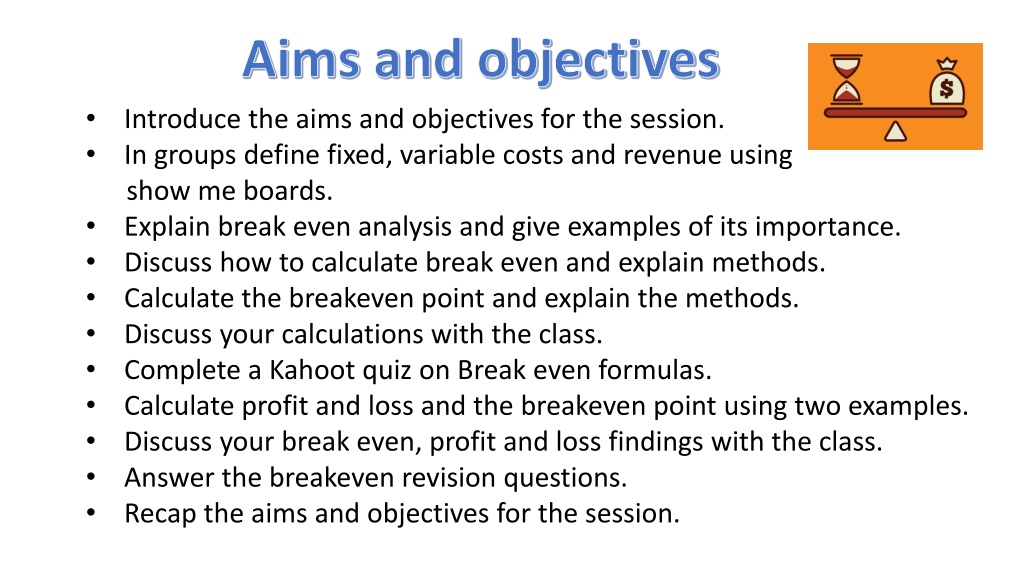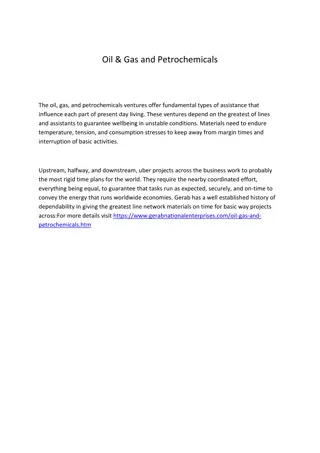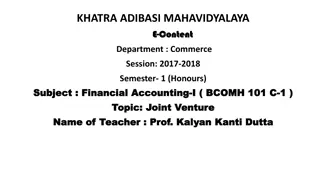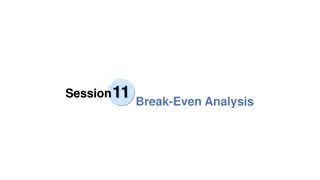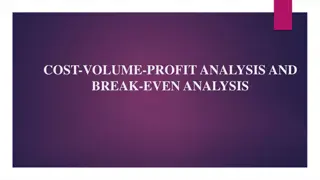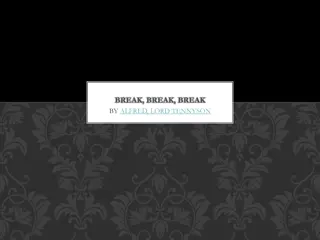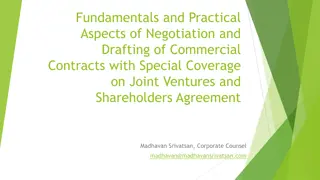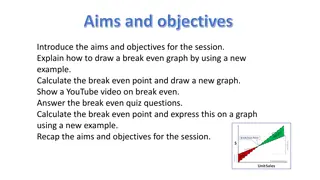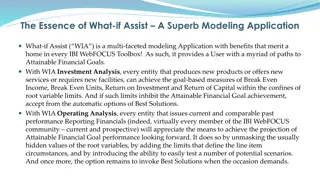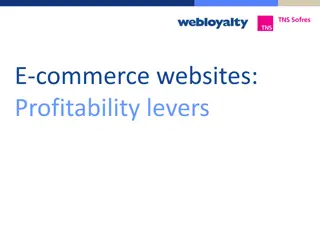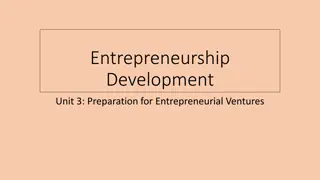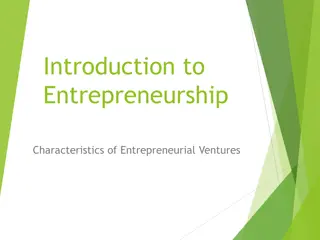Break-Even Analysis: Understanding and Application in Business Ventures
Explore the concept of break-even analysis through a practical example of a young entrepreneur starting a fruit and veg delivery business. Learn to define fixed and variable costs, calculate break-even point, and analyze profit and loss. Engage in interactive activities, discussions, quizzes, and revision questions to master break-even concepts and their importance in business decision-making.
Download Presentation

Please find below an Image/Link to download the presentation.
The content on the website is provided AS IS for your information and personal use only. It may not be sold, licensed, or shared on other websites without obtaining consent from the author. Download presentation by click this link. If you encounter any issues during the download, it is possible that the publisher has removed the file from their server.
E N D
Presentation Transcript
Aims and objectives Introduce the aims and objectives for the session. In groups define fixed, variable costs and revenue using show me boards. Explain break even analysis and give examples of its importance. Discuss how to calculate break even and explain methods. Calculate the breakeven point and explain the methods. Discuss your calculations with the class. Complete a Kahoot quiz on Break even formulas. Calculate profit and loss and the breakeven point using two examples. Discuss your break even, profit and loss findings with the class. Answer the breakeven revision questions. Recap the aims and objectives for the session.
Activity 1 Task: What are fixed/ variable costs? What is revenue and what is profit formulas? Show me boards. Time: 10 mins
Break even Reach a point in a business venture when the profits are equal to the costs.
Break even analysis To gain an understanding of calculating break-even we will use the example of a young entrepreneur wishing to start up a business delivering packages of fruit and veg. He knows that the last local shop in his area closed last year. Sensibly, he has carried out market research which indicates that there will be a good level of demand, but before he begins he needs to know how profitable the business might be. He has also fully researched the costs of starting up as a deliveryman and the costs of purchasing supplies.
Fruit and veg shop example The costs he has researched are as follows: cost of delivery van purchase 6000; insurance and road tax 100 per month; petrol 10.00 per day; average cost of fruit and veg box 5.00; Salaries - 1150 per month; loan repayment 500 per month for twelve months.
Break even Fruit and veg His market research indicates that the fruit and veg boxes will have an average sales price of 9.00. The question then is how many boxes will he need to sell to cover all his costs, i.e. to break even? He decides to calculate break-even on a monthly basis.
Break even point Fixed costs Variable costs Loan - 500 per month Petrol costs - 250 per month Insurance/road tax - 100 per month Salaries - 1150 per month 5.00 per box Sales revenue Total fixed costs - 2000 per month 9.00 per box
BE Contribution method Calculating break-even point using the contribution method. Once we have calculated costs, the next step in calculating break-even output or sales is finding out how much contribution each item sold produces for the business.
Contribution per unit Every product made has a variable cost and a selling price (which must obviously be higher). The difference between the selling price per unit and the variable cost per unit is known as the CONTRIBUTION towards covering the business s fixed costs.
Break even output example There is a simple formula for calculating break-even output. Break-even output = Fixed costs Contribution per unit. Contribution per unit = Selling price Variable costs (per unit)
Break even point - fruit and veg Break-even output = Fixed costs Contribution per unit. Contribution per unit = Selling price Variable costs (per unit) Break even in units = 2,000 9 - 5 Break even in units = 2,000 / 4 Break even in units = 500 boxes
Profit and loss We can now see that to break even our deliveryman must sell 500 fruit and veg boxes per month. If he sells more than 500 boxes he will make a profit. If he sells less than 500 boxes he will make a loss. At break-even point the total contribution equals the total fixed costs.
Calculating profit and loss Break-even analysis also allows us to calculate the profit or loss a business will make at different levels of output. This will always be important after all our grocery seller may wish to go into business only if his profits are likely to be at a certain level. First of all calculate the break-even output, in the above case we know it is 500 boxes per month.
Profit and loss calculation As a result of his market research he believes that he can sell 650 boxes a month. He now wants to know what his profit will be at that level of sales. To find out how much profit will be made, we again use the idea of contribution.
Profit per sales In this case predicted sales are 650. Break-even sales are 500. Profit per sales = Predicted sales Break even sales x Contribution per unit Profit per sales = 650 500 x 4 Profit per sales = 150 x 4 Profit per sales = 600 His profits per month on sales of 650 boxes will be 600.
YouTube video Break even point https://www.youtube.com/watch?v=ZihWEVWCJYk
Activity 2 Task: Calculate the break even point of an example. Time: 15 mins an 5 mins discussion
BREAK 15 mins
Activity 3 Task: Break even Kahoot quiz. Time: 10 mins
Activity 4 Task: Calculate Breakeven point of two scenarios. Time: 30 mins and 5 mins discussion
Break even point questions? 1)What is the break even point? 2)What is the break even point formula Draw on board. 3)Calculate the break even point when fixed costs are 1,000, variable Costs are 3.00 per unit and the selling price is 13.00 per unit. 4) How can you calculate profit by using break even? 5) Calculate the profit made if 150 units were sold?
Aims and objectives Introduce the aims and objectives for the session. In groups define fixed, variable costs and revenue using show me boards. Explain break even analysis and give examples of its importance. Discuss how to calculate break even and explain methods. Calculate the breakeven point and explain the methods. Discuss your calculations with the class. Complete a Kahoot quiz on Break even formulas. Calculate profit and loss and the breakeven point using two examples. Discuss your break even, profit and loss findings with the class. Answer the breakeven revision questions. Recap the aims and objectives for the session.
